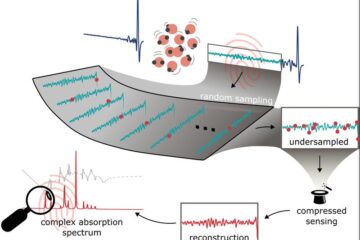Antioxidant to retard wrinkles discovered by Hebrew University researcher

In her doctoral research at the university, Dr. Orit Bossi succeeded in isolating a plant-based antioxidant that delays the aging process by countering the breakdown of collagen fibers in the skin. Dr. Bossi conducted her research under the supervision of Zecharia Madar, the Karl Bach Professor of Agricultural Biochemistry at the Hebrew University, and Prof. Shlomo Grossman of Bar-Ilan University.
Antioxidants operate against free radicals which cause a breakdown of many tissues in the body, including the skin. When found in small quantities in the body, free radicals are not harmful and are even involved in various physical processes. When there is an excess of free radicals, however, as occurs during normal aging or as a result of excessive exposure to ultra-violet radiation from the sun, the result, among other things, is a breakdown of the collagen and elastin fibers in the skin. When this happens, there is a loss of skin elasticity and the formation of wrinkles.
“A problem with many of the commercial antioxidants found today in the market that are said to retard the aging process is that they oxidize quickly and therefore their efficiency declines with time,” said Dr. Bossi. “Vitamin C, for example, oxidizes rapidly and is sensitive to high temperatures. This is also true of the antioxidant EGCG which is found in green tea, and vitamin E. As opposed to these, the antioxidant which I used in my research is able to withstand high temperatures, is soluble in water, and does not oxidize easily and thus remains effective over time.”
Dr. Bossi is looking towards a new generation of cosmetic products which will not only combat wrinkles but will be more effective against deeper levels of skin wrinkles than current products. Dr. Bossi did not reveal the plant source she used to derive the antioxidant, since the research is in the process of being patented.
In her research, Dr. Bossi conducted experiments on mice skin tissue, which, she says, resembles that of humans. She applied her antioxidant on two skin cell groups – those which had been exposed to the sun’s rays and received her antioxidant and those which also had been exposed to sun but did not receive the antioxidant. The untreated cells showed a rise in free radicals causing wrinkles, while those cells which had been treated showed no significant increase in the free radicals level.
Media Contact
More Information:
http://www.huji.ac.ilAll latest news from the category: Life Sciences and Chemistry
Articles and reports from the Life Sciences and chemistry area deal with applied and basic research into modern biology, chemistry and human medicine.
Valuable information can be found on a range of life sciences fields including bacteriology, biochemistry, bionics, bioinformatics, biophysics, biotechnology, genetics, geobotany, human biology, marine biology, microbiology, molecular biology, cellular biology, zoology, bioinorganic chemistry, microchemistry and environmental chemistry.
Newest articles

Molecular Fingerprint Beyond the Nyquist Frequency
Ultrafast laser spectroscopy allows the ascertainment of dynamics over extremely short time scales, making it a very useful tool in many scientific and industrial applications. A major disadvantage is the…

High-energy-density aqueous battery based on halogen multi-electron transfer
Traditional non-aqueous lithium-ion batteries have a high energy density, but their safety is compromised due to the flammable organic electrolytes they utilize. Aqueous batteries use water as the solvent for…

First-ever combined heart pump and pig kidney transplant
…gives new hope to patient with terminal illness. Surgeons at NYU Langone Health performed the first-ever combined mechanical heart pump and gene-edited pig kidney transplant surgery in a 54-year-old woman…





















